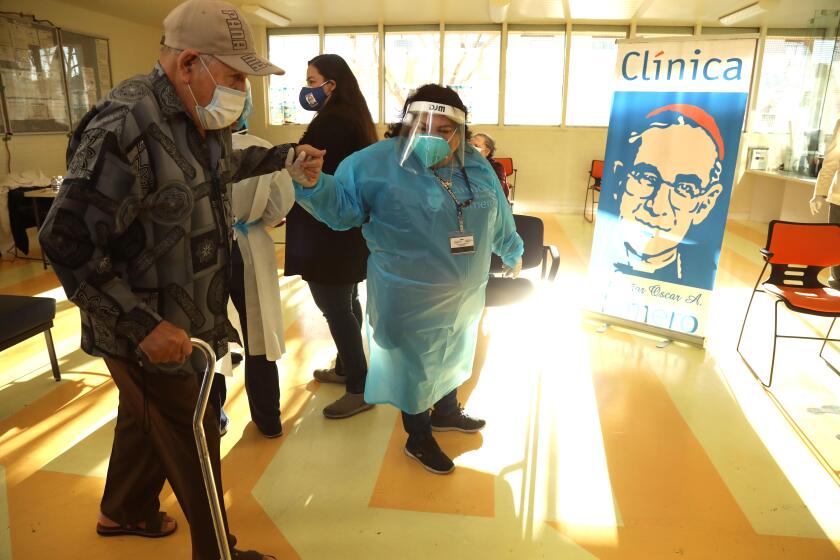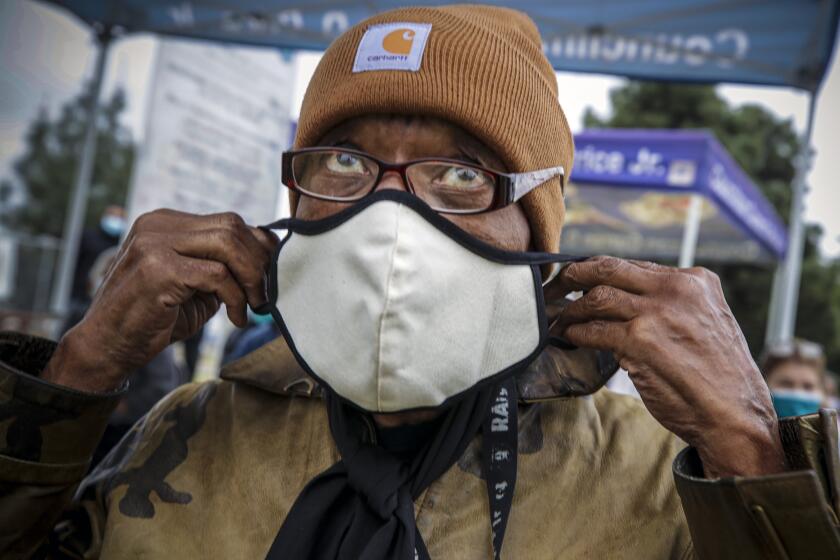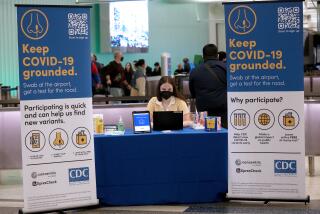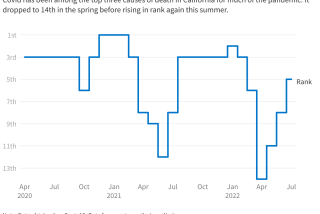California now has the most COVID-19 deaths, though fewer per capita than most states
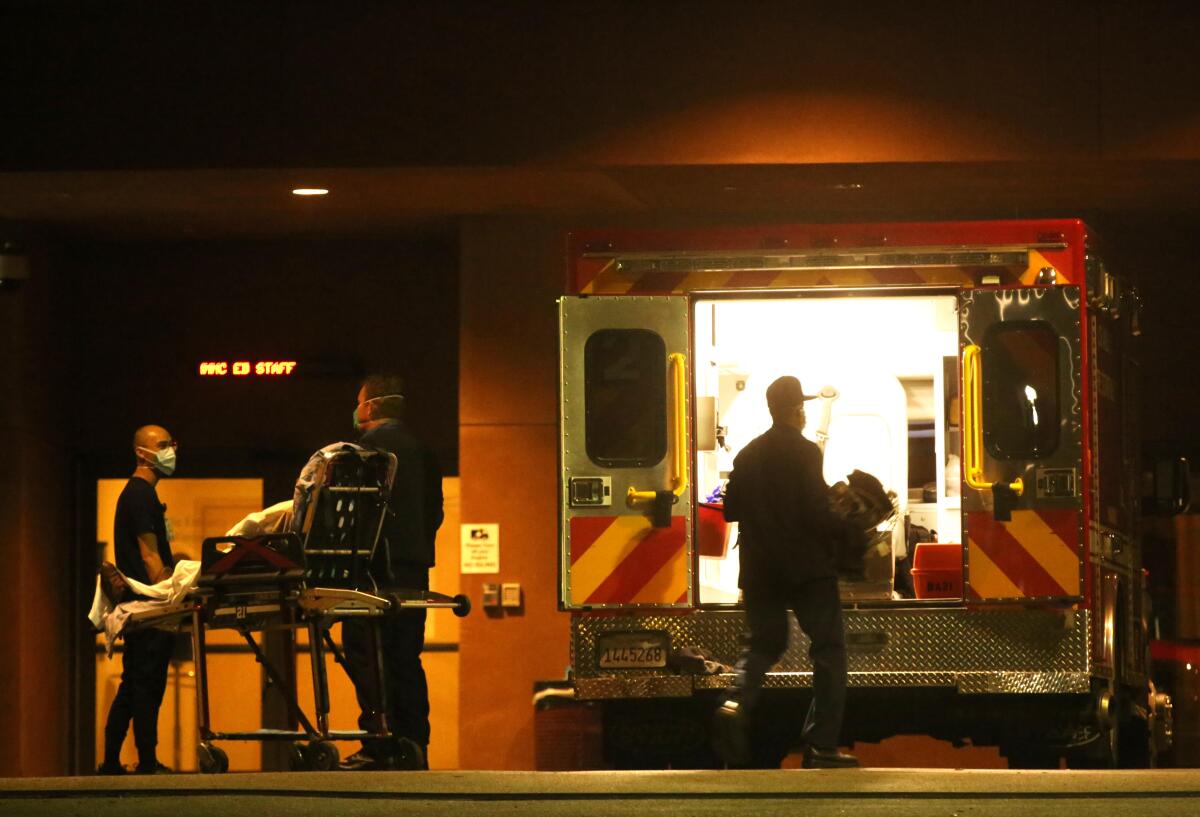
- Share via
California now has more COVID-19 deaths than any other state, a distinction reflecting both its large population and the ravages of a winter coronavirus wave that has only recently begun to recede.
All told, 45,007 Californians have died from COVID-19, with 514 fatalities reported Tuesday alone, according to data compiled by The Times.
New York, which was crushed in the pandemic’s early days by a heavy death toll and became the poster child for how rapidly the virus could spin out of control, has recorded 44,969 fatalities.
The raw numbers, though bleak, don’t paint a complete picture. California, with its roughly 40 million people, has reported 114 COVID-19 deaths per 100,000 residents — the 18th-lowest rate among all states.
By comparison, the reported COVID-19 death rate per 100,000 residents is 142 in Texas and 135 in Florida, Times data show.
To further put California’s number in perspective, the state is closer to Wyoming, which has seen 107 deaths per 100,000 residents, than it is to New York, at 229, or New Jersey, which has the highest rate in the nation at 248.
Aside from those overall figures, California’s recent death tolls continue to be high even as other markers trend in a promising direction.
Over the last two weeks, California has announced almost 7,000 COVID-19 deaths, underlining the continuing heart-wrenching impact of the virus.
Although many of those infected experience only mild symptoms, or none at all, a number eventually fall ill enough to require hospitalization. From there, some deteriorate to the point that they need intensive care, and despite the efforts of healthcare workers, some die.
Health officials say the surest way to combat this scenario is to reduce the number of people being infected with the coronavirus in the first place.
“Should cases increase, hospitalizations and deaths will increase shortly thereafter and in the weeks ahead,” Los Angeles County Public Health Director Barbara Ferrer said this week. “We really can’t afford that increase.”
California is reserving large amounts of COVID-19 vaccine supply for people needing their second dose, leaving fewer first doses available.
Promising news, however, emerged on that front over the last week as California reported an average of 12,278 new cases per day — a 47% decrease from two weeks ago, Times data show.
That’s down precipitously from the worst peaks of the winter surge, when the state was recording nearly 45,000 cases a day.
Despite that decline, the number of daily new coronavirus cases is still substantially higher than before the surge. In early October, California was recording about 3,000 coronavirus cases a day.
More than 3.4 million Californians have tested positive for the coronavirus over the course of the pandemic, though many experts and officials believe the true number of infections is higher than that.
The number of COVID-19 patients hospitalized statewide has also tumbled, from a high of nearly 22,000 in early January to roughly 11,200 as of Monday.
“We do see light at the end of the tunnel,” Gov. Gavin Newsom said Tuesday. “We are seeing real progress.”
Placing a cloth mask over a medical one or putting on a tightly fitted medical mask could reduce exposure, a CDC report finds. There are caveats.
But the state’s steps forward are not irreversible, and officials warn California could quickly regress if people begin to disregard infection-prevention protocols such as wearing face coverings while in public and avoiding crowded settings — particularly indoors.
Winter holiday celebrations are in the rearview mirror, but officials are continuing to preach caution for Valentine’s Day and the upcoming Presidents Day weekend.
Though smaller-scale outdoor gatherings are once again allowed, and couples can enjoy a romantic meal on a restaurant patio, Ferrer said L.A. County residents should still abstain from traveling, if possible, until transmission rates drop.
“We strongly advise against any leisure or recreational travel until further notice,” she said. “The risks are just too great.”
More to Read
Sign up for Essential California
The most important California stories and recommendations in your inbox every morning.
You may occasionally receive promotional content from the Los Angeles Times.

